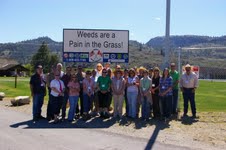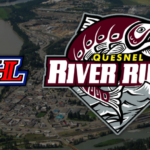Weeds know no borders
International borders are invisible lines that humans have marked with fences and border crossing buildings. Invasive plants do not know anything about international boundaries. They don’t stop at the border and declare what they are doing and where they are going. In 2003 the Weeds Cross Borders Project became official.Two counties in Washington State and two Regional Districts in B.C. make up the management area that the project covers. “To our knowledge this is the first project of its kind between Canada and the US. The project is great for information and resource sharing,” said Barb Stewart, invasive plant program co-ordinator. “A big challenge is the difference in noxious weed legislation between the two countries.” Stewart said that the major accomplishment of the project is the creation of a unique team that allows coordination of work across the border in both directions. “Washington has some species such as yellow starthistle that is not in Canada yet so they work hard to keep it from spreading up here and we do our part to help stop the spread of our invasive species from crossing over to their side,” she explained. On July 7 a tour was organized for some of the partners and concerned citizens on both sides of the border to showcase the work we have been doing. The tour started in Tonasket, WA where 29 people boarded the bus and headed out to view project sites. They stopped at a few different sites in Okanogan County including stopping to look at a Russian knapweed site and discussed the challenges of dealing with federal lands. They also stopped at the boat launch at Palmer Lake to see where puncturevine had been brought in by a vehicle before crossing at the Nighthawk border crossing. Once in B.C., Linda Wilson with the B.C. Ministry of Agriculture talked about the successes and challenges of biological control and the early detection and rapid response project that the B.C. government is working on. After being welcomed by Mayor Stu Wells and the Osoyoos Indian Band the group heard from several more speakers over lunch including the Honourable Bill Barisoff, MLA, and State Representative, Joel Kretz. After lunch the group stopped to look at a wild 4 O’clock site, and then crossed back into Washington at the Osoyoos border crossing.
“The tour really showed some of the successes and challenges faced on both sides of the border. There was some really good information sharing and I think there will be some new and exciting things come from that,” said Stewart.
For more information on invasive plant species and this project please contact Barb Stewart, the Boundary Invasive Plant Program Coordinator, at bwmc@nethop.net or 250-446-2232.























